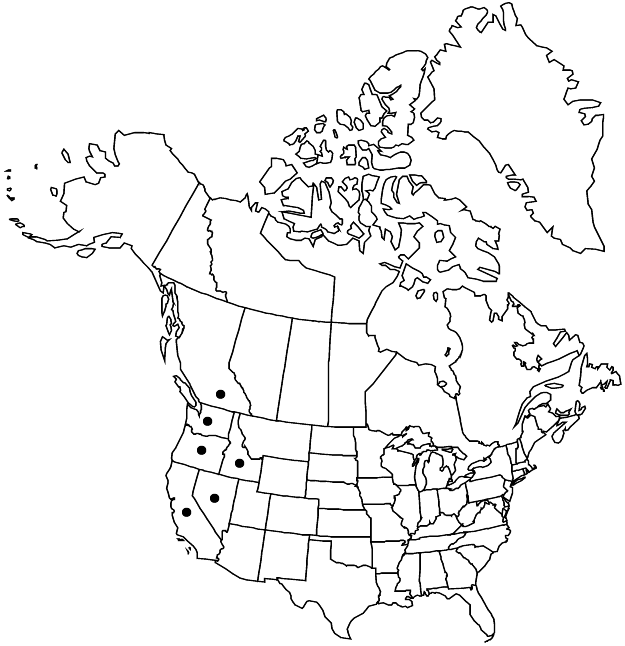Polygonum sawatchense subsp. oblivium
Sida 20: 1637, figs. 1b, 2b, d, f. 2003.
Stems green, simple or with few branches from base, 5–15(–25) cm, papillose-scabridulous. Leaves persistent, gradually reduced in size distally; ocrea papillose-scabridulous; blade elliptic to oblong-elliptic, 8–20(–25) × 5–10 mm, margins flat, papillose-denticulate. Inflorescences mostly axillary, if also terminal then less than 5 cm; cymes 1–3(–4)-flowered. Pedicels 1–3 mm. Flowers: at least some open; perianth 3–4 mm; tube 20–30% of perianth length; tepals greenish white or greenish yellow, sometimes flushed with purple, with white margins, oblong-elliptic; midveins greenish or brown, usually branched at base; stamens 8. Achenes elliptic to elliptic-ovate, 2.6–3.3 mm.
Phenology: Flowering Jun–Aug.
Habitat: Dry or moist meadows, pastures, sagebrush, and forests, on sandy, gravelly, or rocky substrates
Elevation: 1000-3500 m
Distribution

B.C., Calif., Idaho, Nev., Oreg., Wash.
Discussion
Selected References
None.